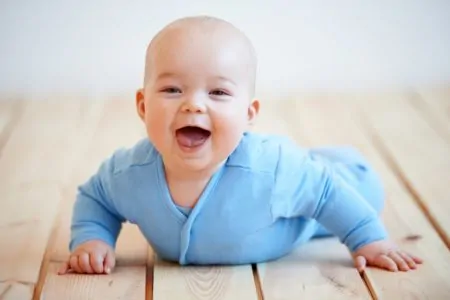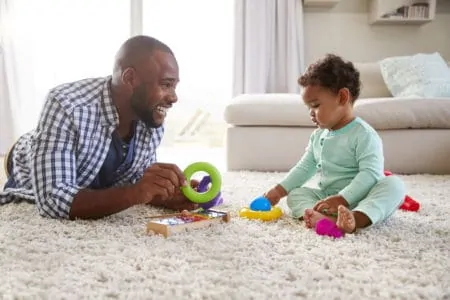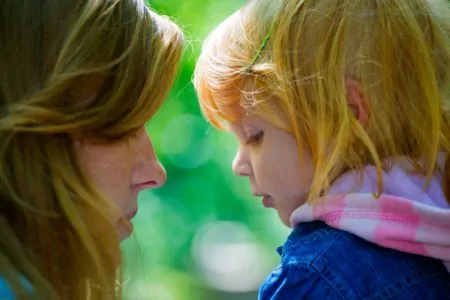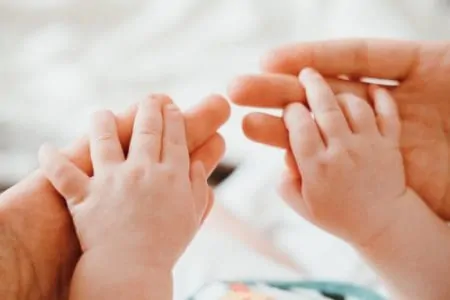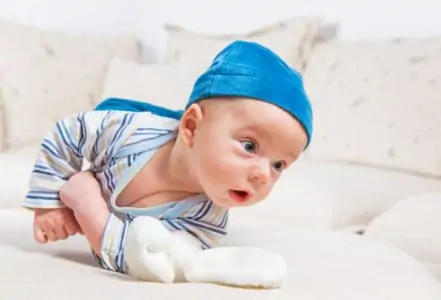The World Health Organization recommends that children between the ages of 1 and 5 get at least 180 minutes of physical activity every day (1). But don’t panic; nobody expects you to run a toddler boot camp for three solid hours.
Instead, that time should be spread throughout the day in bursts of active play. This movement helps ensure general physical health (2) and encourages the development of vital gross motor skills in preschoolers and toddlers.
Key Takeaways
- Big Muscles Matter: Gross motor skills involve large muscles and are essential for everyday tasks like walking, sitting upright, and dressing.
- Milestone Moments: Toddlers and preschoolers need to practice running, jumping, climbing, and balancing to develop properly.
- Outdoor Fun: Simple games like tag, obstacle courses, and playground visits are excellent for building strength.
- Indoor Options: You can build skills inside using yoga, dance parties, and creative games like “The Floor Is Lava.”
What Are Gross Motor Skills?
Gross motor skills are the abilities that allow us to move our entire body. They rely on the large muscles in the arms, legs, and torso. We use these skills for almost everything active, including walking, running, and climbing.
These are different from fine motor skills, which involve smaller movements like grasping a pencil or picking up a Cheerio. However, you still need strong gross motor skills to stabilize your body so you can perform those smaller tasks effectively (3).
Why Are Gross Motor Skills Important for Toddlers and Preschoolers?
We need these skills for mundane daily activities, such as getting dressed, navigating a classroom, and even sitting at a desk without slumping (4).
When toddlers and preschoolers develop strong gross motor skills, they are learning how to:
- Dress and undress themselves independently.
- Use the potty comfortably.
- Navigate their environment without constantly bumping into furniture.
- Walk on uneven surfaces, like grass or gravel, without falling.
- Maintain posture while eating at the table.
What Gross Motor Skills Should Preschoolers Work On?
Children use the long muscles of the arms and legs, along with their core muscles, during physically active play.
To stay on track with development, toddlers and preschoolers should practice these movements (5):
- Running without tripping.
- Jumping with two feet.
- Skipping (usually closer to age 5).
- Hopping on one foot.
- Climbing playground equipment.
- Bending over to pick things up.
- Squatting while playing.
- Twisting at the waist.
- Balancing on one leg.
- Kicking a ball.
- Spinning around.
- Rolling on the ground.
- Bouncing and catching a ball.
- Overhand and underhand throwing.
- Pedaling a tricycle or bike.
This list doesn’t mean you need to drill your kids like athletes. Instead, facilitate a wide range of play. Mix and match classic games with general free play.
There is plenty of fun to be had while exercising, or even trying activities such as yoga. Not only will it help your child physically, but it also prepares them for the rigors of a full day at kindergarten.
Gross Motor Activities for Preschoolers and Toddlers
Any activity that gets your child moving their whole body is a win.
When I caught our kids painting our newly decorated bedroom wall, I wasn’t exactly thrilled. However, looking back, the way they stretched to reach the high spots was excellent gross motor practice. (I still don’t recommend the wall art, though).
If you need safer inspiration that doesn’t involve repainting the house, we have compiled a list of classic and creative activities your kids will love.
20 Outdoor Gross Motor Activities for Toddlers and Preschoolers
1. The Stick Ladder
This activity is incredibly simple to set up and great for coordination. You only need a few sticks or pool noodles.
- Lay your sticks or pool noodles on the ground parallel to each other, like the rungs of a ladder.
- Have your child jump from one gap to the next. Once they master two-foot jumping, challenge them to hop on one foot.
- Space the rungs farther apart as your child improves to keep it challenging.
With the same setup, you can also play:
- Reach for the Sky: Have your child stand on a rung and see how high they can stretch.
- Target Practice: Give your child a beanbag while they stand on a rung. Ask them to throw the beanbag into a specific gap.
2. Pick the Fruit
You’ll need string or yarn, a tree or fence, and some soft, light objects. A basket or box works great for collecting.
- Tie pieces of yarn to the lower branches of a tree or fence posts.
- Loosely attach an item (the “fruit”) to the hanging end of the string.
- Give your child a basket and have them reach up to pick the fruit.
To make it more engaging, draw fruits on paper plates or use plastic toy food. Just ensure they are tied securely enough to hang but loosely enough for a toddler to pull down.
3. Outrun the Stuffy
Lay out a few “bases” using hula hoops, chalk circles, or old shirts. Choose a spot to stand that is central to the bases.
Have your child pick a starting base. Shout, “Go!” and name a target base. Your child runs to that base while you try to throw a stuffed animal to the same spot. The goal is for them to beat the flying stuffy to the base.
If you miss or they arrive first, they win that round. It’s a great way to practice sprinting and changing direction.
4. Run and Sort
Place a large pile of mixed objects (toys, colored blocks, socks) at one end of the yard. Place three or four colored baskets at the other end.
- Assign a color to each basket.
- Have your child run to the pile, grab one item, and run back to place it in the matching basket.
- Repeat until the pile is gone.
This combines physical exertion with cognitive sorting skills.
5. Giant Memory Cards
You need a pack of paper plates or cardstock for this life-sized board game.
- Create pairs of drawings (simple shapes or animals) on the plates.
- Lay the plates face down on the grass, spaced out so kids have to walk or run between them.
- Have your child turn over two plates. If they match, they keep the pair. If not, they flip them back over and run to the next set.
6. Cycling Delivery Service
Riding a tricycle, pedal bike, or balance bike is fantastic for leg strength (6). To make it more than just riding in circles, try this:
- Obstacle Course: Draw a chalk track with curves and stop signs on the driveway.
- Delivery Driver: Set up a “store” at one end and a “house” at the other. Have your child take orders and deliver items. Use a backpack so they can carry the goods safely while steering.
7. Box City Builder
Save your delivery boxes. Collect various sizes and let your kids drag, stack, and arrange them outside to build towers, forts, or spaceships. Lifting and positioning the boxes works on upper body strength and coordination.
8. Dress-Up Relay
Place two piles of clothes at opposite ends of the yard. Use hula hoops to mark the spots.
- Have your child start at one end.
- On “Go,” they run to the other end, put on one item (like a hat or oversized shirt), and run back.
- They then put on an item from the starting pile.
- Repeat until they are wearing everything.
This is hilarious to watch and tiring for them.
9. Roll, Jump, Run
One person is the leader. They call out an action (Roll, Jump, or Run) and a location (e.g., “to the oak tree”). The players must perform that specific movement to get to the destination. The first one there becomes the new leader.
10. Pool Noodle Sit-Ups
Give each child a pool noodle. Have them lie flat on the grass holding the noodle in outstretched arms above their head. The challenge is to sit up and touch the noodle to their toes. It’s a core workout disguised as a game.
11. Wash the Animal
Draw a large animal (like a duck or elephant) on an old white T-shirt. Hang the shirt on a clothesline or fence.
Give your child a bucket of water and some sponges. Shout, “Wash the duck!” Your child soaks the sponges and throws them at the shirt to clean the animal. This is excellent for developing throwing skills and arm strength.
12. Giant Egg and Spoon Race
Forget tiny eggs; use a balloon and a large plastic beach shovel or wooden spoon.
- The Race: Kids race from point A to point B while keeping the balloon balanced.
- The Maze: Create a winding path they must navigate without dropping the balloon.
13. Scrub Them Down
Toddlers love water play. Fill a bucket with warm, soapy water and give them sponges, brushes, and rags. Assign them items to wash:
- Low windows on the house.
- Ride-on toys and bikes.
- Plastic patio furniture.
- Waterproof toys.
This involves plenty of squatting, reaching, and scrubbing motions.
14. Swimming
You don’t have to swim laps to get a workout. Simple water play creates resistance that strengthens muscles.
Any movement they make while playing in the water helps strengthen core muscles and limbs.
Safety First
15. Balloon Keep-Up
Inflate a balloon and challenge your child to keep it off the ground. They can use their hands, head, or feet, but they cannot catch it. This improves hand-eye coordination and reaction time.
16. Classic Playground Games
If you have a group, don’t overlook the classics. Games like Mother May I?, What Time Is It, Mr. Wolf?, and Tag are staples for a reason, they are fun and physically demanding.
17. Parkour at the Park
Take your toddler to the local playground. Climbing ladders, sliding, swinging, and navigating the jungle gym are mostly natural gross motor workouts. Encourage them to try the monkey bars (with support) or climb up the slide (if safe and empty).
18. Silly Walks
This requires zero equipment. Challenge your child to walk like different animals or characters:
- Waddle like a penguin.
- Hop like a bunny.
- Stomp like a giant dinosaur.
- Gallop like a horse.
19. Catch the Tail
Tuck a ribbon or scarf into your back pocket or waistband so it trails behind you like a tail. Run around the yard and let your toddler try to catch the “tail.” Switch roles so they have to run away from you while you try to grab their tail.
20. Musical Scramble
Draw different shapes, colors, or letters on paper plates and spread them on the lawn. Play music and have your child dance.
When the music stops, shout out a category (e.g., “Red!” or “Circle!”). Your child must scramble to find the correct plate and stand on it.
Indoor Gross Motor Activities for Preschoolers and Toddlers
Rainy days don’t have to mean screen time. You can burn energy inside with these space-saving ideas.
1. Laser Maze
Use painter’s tape or yarn to create a “laser” web in a hallway. Stick the tape from one wall to the other at various heights and angles. Challenge your child to navigate through the hallway without touching the lasers. They will have to crawl under, step over, and twist through the gaps.
2. Pillow Sumo
This is great for roughhousing. Put an oversized T-shirt on your child and stuff a pillow inside to make a big belly. Do the same for yourself or a sibling. Then, push and bump into each other (gently) on a soft carpet or mattress.
3. Animal Antics
This is essentially “Silly Walks” for indoors. To make it more structured, one person acts as the predator and the other the prey, moving around the furniture according to their animal persona.
4. Couch Cushion Obstacle Course
Rearrange the living room. Build tunnels with chairs and blankets, create mountains with sofa cushions, and use rugs as islands.
5. The Floor Is Lava
It’s a classic for a reason. Shout “The floor is lava!” and your child has 5 seconds to get off the ground. They can stand on the couch, a rug (if you designate it as a “safe zone”), or a sturdy chair.
6. Lily Pad Leap
Cut shapes out of colored paper or use non-slip placemats. Lay them out on the floor. These are your lily pads.
- Frog Leap: Squat down and jump from pad to pad.
- Color Jump: Shout a color, and your child must jump to a pad of that color.
7. Heavy Work Delivery
“Heavy work” (pushing, pulling, lifting) is calming and regulating for kids. Fill a box with heavy books or toys. Ask your child to push the box across the room to “deliver” it to a specific location.
8. Scavenger Hunt Dress-Up
Hide costume pieces (hats, sunglasses, scarves) around the house. When your child finds an item, they must put it on before searching for the next one. Place items high up or low down to encourage stretching and squatting.
9. Jump the River
Lay two jump ropes or strings parallel on the floor. The space between them is the river.
- Start with the ropes close together and have your child jump over.
- Gradually widen the river after each successful jump.
- Add paper sharks in the middle for extra motivation not to fall in.
10. Active Simon Says
Tailor the commands to focus on large movements:
- Simon says do five jumping jacks.
- Simon says stand on one leg like a flamingo.
- Simon says spin in a circle three times.
- Simon says crawl like a baby.
11. Paper Ball Soccer
Scrunch up a newspaper page into a ball. Use tape to hold it together if needed. Set up a goal using two water bottles. It’s safe for indoor play and great for kicking skills.
12. Freeze Dance
Play upbeat music and encourage wild dancing. When you pause the music, everyone must freeze immediately. The most challenging part is holding a balance pose while frozen.
13. Cardboard Hopscotch
Use masking tape to outline a hopscotch grid on the floor, or cut cardboard squares and number them. It works just like the sidewalk version but saves your knees.
14. Storytime Yoga
Yoga builds balance and core strength without the chaos of running. Try frog pose, tree pose, or downward dog. You can tell a story where the characters do the poses to keep them engaged.
15. Pretend Play
Simple imaginative games often involve movement. Pretending to be firefighters (crawling under smoke), astronauts (walking in slow motion), or chefs (stirring giant pots) gets the body moving.
16. Pillow Walk
Line up every pillow in the house to make a wobbly path. Walking on the unstable surface strengthens ankle muscles and improves balance.
17. Bubble Pop
Blow bubbles and have your child pop them. Challenge them to pop them with different body parts: “Pop this one with your nose!” “Pop that one with your elbow!” This requires spatial awareness and coordination.
18. Action Songs
Music acts as a cue for movement. Songs like “Head, Shoulders, Knees, and Toes,” “The Hokey Pokey,” and “Wheels on the Bus” are perfect gross motor workouts.
19. Paper Plate Skates
This is best for carpeted floors. Place a paper plate under each of your child’s feet. Have them “skate” around the room without lifting their feet. It engages the inner thigh and core muscles.

